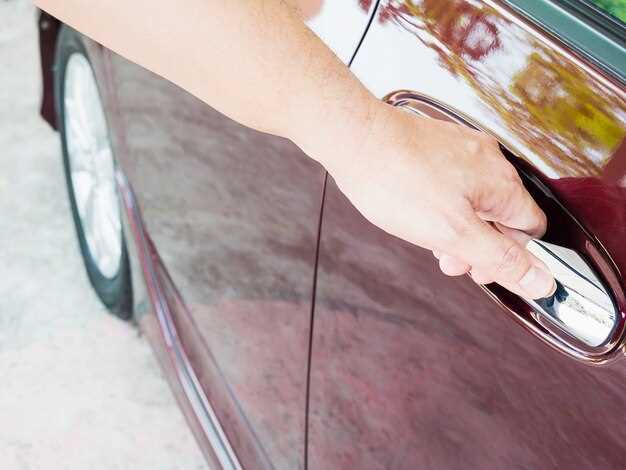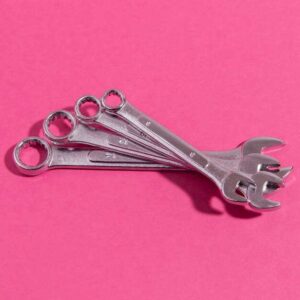Boost acceleration with a cold air intake system. This modification allows your engine to breathe better, leading to improved power output. Choose a high-quality product and ensure it’s installed properly for maximum benefits.
Conclusion: Upgrading your exhaust system can significantly enhance horsepower and torque. A well-designed aftermarket exhaust reduces back pressure, allowing gases to exit the engine more smoothly. Select a system that matches your vehicle’s specifications for optimal performance.
Incorporate a performance chip or ECU tune to fine-tune your engine’s parameters. These chips can adjust fuel maps and ignition timing, resulting in noticeable gains in both power and efficiency. Monitor the changes during testing to ensure reliability.
Suspension upgrades also play a vital role in handling and safety. Consider investing in performance shocks or struts to improve your vehicle’s stability during cornering. These parts breathe new life into how your car responds on the road.
Lastly, don’t overlook the importance of regular maintenance. Keeping your vehicle in top shape with routine checks on oil, filters, and tires can prevent performance drops over time and ensure your modifications deliver the best results.
Choosing the Right Tires for Better Grip
Select tires that match your driving style and conditions. Tires come in various compounds and tread designs, impacting grip and performance. For high-performance needs, opt for softer compounds that provide better traction, especially in warm conditions. These tires wear faster but maximize grip.
Inspect the tread pattern. Look for tires with wider grooves and larger contact patches for improved handling on wet surfaces. Asymmetrical or directional tread patterns enhance stability during cornering while reducing hydroplaning risk.
Select the correct tire width. Wider tires increase contact with the road, offering enhanced grip. However, ensure your vehicle can accommodate wider tires and consider the effects on steering response and comfort.
Pay attention to the tire rating, especially the speed and load ratings. Choose tires designed for your vehicle’s specifications to ensure safety and performance. A mismatch can negatively impact handling and tire longevity.
Consider seasonal requirements. Summer tires provide optimal performance in warm conditions, while winter tires excel in snow and ice. All-season tires are a compromise, offering decent performance across various conditions but may not be the best in extreme weather.
Maintain proper tire pressure. Regularly check and adjust pressure according to manufacturer specifications. Under-inflated tires lead to increased wear and reduced grip, while over-inflated tires can cause a harsh ride and decreased contact with the road.
Monitor tire age and condition. Tires degrade over time, even if they show little wear. Replace tires every six years, or sooner if you notice cracks, bulges, or other signs of damage. Fresh tires provide better grip and improve overall performance.
Optimizing Air Intake Systems for Increased Power
Upgrade your air filter to a high-flow option. This modification enhances airflow to the engine, boosting power and responsiveness. A reusable cotton or foam filter can provide better performance compared to standard paper filters while being environmentally friendly.
Replace the factory intake system with a cold air intake (CAI). This system pulls cooler air from outside the engine bay, which is denser and contains more oxygen, resulting in improved combustion and increased horsepower. Make sure to choose a CAI specifically designed for your vehicle model for optimal fit and function.
Consider removing or modifying any restrictions in the factory intake pathways. This may involve smoothing out bends or using larger diameter tubing. Reducing turbulence and airflow restriction increases overall efficiency and power delivery.
Install an aftermarket throttle body spacer. This component increases the volume of air entering the engine, enhancing throttle response and improving acceleration. Ensure that the spacer is compatible with your intake setup for best results.
Check the position of the intake air temperature (IAT) sensor. If modified, relocate it to reduce heat soak and promote accurate readings. Keeping the sensor cool helps the engine management system adjust fuel maps effectively, optimizing performance.
For an advanced enhancement, consider tuning your engine’s ECU after modifying the intake system. A performance tune adjusts fuel-to-air ratios, ignition timing, and other critical parameters tailored to the new intake setup, maximizing your vehicle’s potential.
Lastly, keep maintenance in mind. Regularly clean or replace air filters and check components for wear. An optimized air intake system requires care to ensure sustained performance increases and reliability.
Calibrating Engine Management Systems for Peak Output
Adjust the engine management system (EMS) settings to maximize performance. Focus on air-fuel ratio (AFR) adjustments first. An optimal ratio typically hovers around 14.7:1 for gasoline engines, but a slightly richer mixture can boost horsepower in performance applications. Use a wideband oxygen sensor for precise monitoring.
Next, modify ignition timing. Advance the timing gradually while monitoring engine knock. This enhances throttle response and increases power output. Ensure you use a quality knock sensor to prevent adverse effects from excessive timing.
Update your vehicle’s fuel maps to accommodate performance modifications. If you’ve installed a new intake or exhaust system, recalibrating the fuel maps ensures the engine receives adequate fuel for the increased airflow, maximizing horsepower.
Consider adjusting the camshaft settings. If your system allows, optimize variable valve timing to improve low-end torque and high-end power. This creates a seamless power band across different RPMs.
Monitor and control boost levels on turbocharged engines. Increasing boost can significantly enhance performance, but it requires precise calibration to prevent engine damage. Use an aftermarket boost controller to fine-tune pressures safely.
Utilize software tools for data logging during testing. Logging allows you to analyze feedback from various components, promoting informed adjustments. Regularly check parameters such as temperature, airflow, and pressure to maintain optimal performance.
Perform routine dyno tests after significant adjustments. This practice reveals tangible power increases and identifies any issues that may arise from modifications. Keep track of dyno results to guide future tuning sessions effectively.
Tuning Suspension for Improved Handling Characteristics
Upgrade your shock absorbers to enhance responsiveness. Consider performance struts or coilovers that allow for adjustable settings. This flexibility lets you fine-tune your ride height and damping, improving cornering stability and ride comfort.
Sway bars are another critical component. Stiffening the sway bars reduces body roll during sharp turns. Opt for larger diameter sway bars for a more significant impact, as this adjustment directly contributes to better weight distribution through corners.
Review your spring rates. Installing progressive springs can enhance comfort while offering the necessary stiffness for spirited driving. Choose springs that complement your shock absorbers for optimal performance across various driving conditions.
Tire selection plays a vital role in handling. Invest in high-performance tires that provide superior grip and feedback. Maintain proper tire pressures to ensure even contact with the road, which directly affects handling and stability.
Don’t overlook alignment settings. A precise alignment minimizes tire wear while maximizing contact patch, resulting in improved handling characteristics. Adjust camber and toe settings according to your driving style for enhanced performance.
Lastly, consider upgrading to lightweight components. Reducing unsprung weight from parts like control arms or spindles results in better steering response and overall agility. Accuracy in steering translates to greater confidence on the road.
Upgrading Exhaust Systems for Enhanced Throttle Response
Installing a performance exhaust system can significantly improve throttle response by reducing back pressure and enhancing airflow. Start with a quality cat-back exhaust system, which replaces the factory exhaust from the catalytic converter to the rear of the vehicle. This modification typically provides a noticeable increase in power and responsiveness.
Consider the following specific upgrades:
- Mandrel-Bent Pipes: Ensure the exhaust pipes are mandrel-bent rather than crush-bent. Mandrel bending maintains the diameter throughout the curve, allowing for smoother airflow.
- Larger Diameter Pipes: Upgrading to larger diameter pipes can decrease exhaust restrictions, enhancing engine efficiency. However, balance is key; excessively large pipes may reduce back pressure affecting low-end torque.
- Improved Mufflers: Select high-performance mufflers designed to minimize restrictions while maintaining sound quality. Straight-through designs often provide the best performance gains.
- High-Flow Catalytic Converters: If legal in your area, consider a high-flow catalytic converter. It can significantly enhance exhaust flow compared to restrictive factory units.
After installation, check for fitment issues and ensure there are no leaks at connection points. A well-fitted exhaust minimizes unwanted noise and maintains performance. Regular maintenance on the exhaust system can extend its lifespan and sustain performance improvements.
Monitor throttle response before and after installation to quantify improvements. Many enthusiasts report noticeable differences in acceleration and engine responsiveness following these enhancements, making it a worthwhile investment for any performance build.
Utilizing Weight Reduction Techniques for Better Speed
Focus on removing non-essential components from your vehicle. Start with the rear seats; if you rarely carry passengers, consider uninstalling them. This alone can make a significant difference in weight and improve acceleration times.
Next, assess your car’s wheels. Stock wheels can be heavy; opting for lightweight alloys can reduce unsprung weight, positively impacting handling and speed. Exchange heavy tires for performance options designed to be lighter yet durable.
Replace heavy factory components with aftermarket parts. Items such as hoods, bumpers, and even window panes can be sourced in lighter materials. Consider materials like carbon fiber or fiberglass, which offer reduced weight while maintaining structural integrity.
Examine your trunk and interior for superfluous items. Remove any unnecessary tools, spare tires, or sound systems if not required for your driving style. This decluttering not only lightens the load but can also enhance your car’s performance.
Utilize a weight reduction table to track modifications and their impacts:
| Component | Weight Savings (lbs) | Notes |
|---|---|---|
| Rear Seats | 30 | Only remove if rarely used. |
| Heavy Wheels & Tires | 15 | Opt for lighter aftermarket options. |
| Aftermarket Hood | 20 | Consider carbon fiber for optimal reduction. |
| Spare Tire & Tools | 20 | Replace with a tire repair kit for daily driving. |
| Sound System | 15 | Remove if not essential for everyday use. |
Combining these methods leads to noticeable speed improvements without altering handling dynamics. Evaluate each weight-saving strategy based on your driving preferences and ensure each modification aligns with your performance goals.







